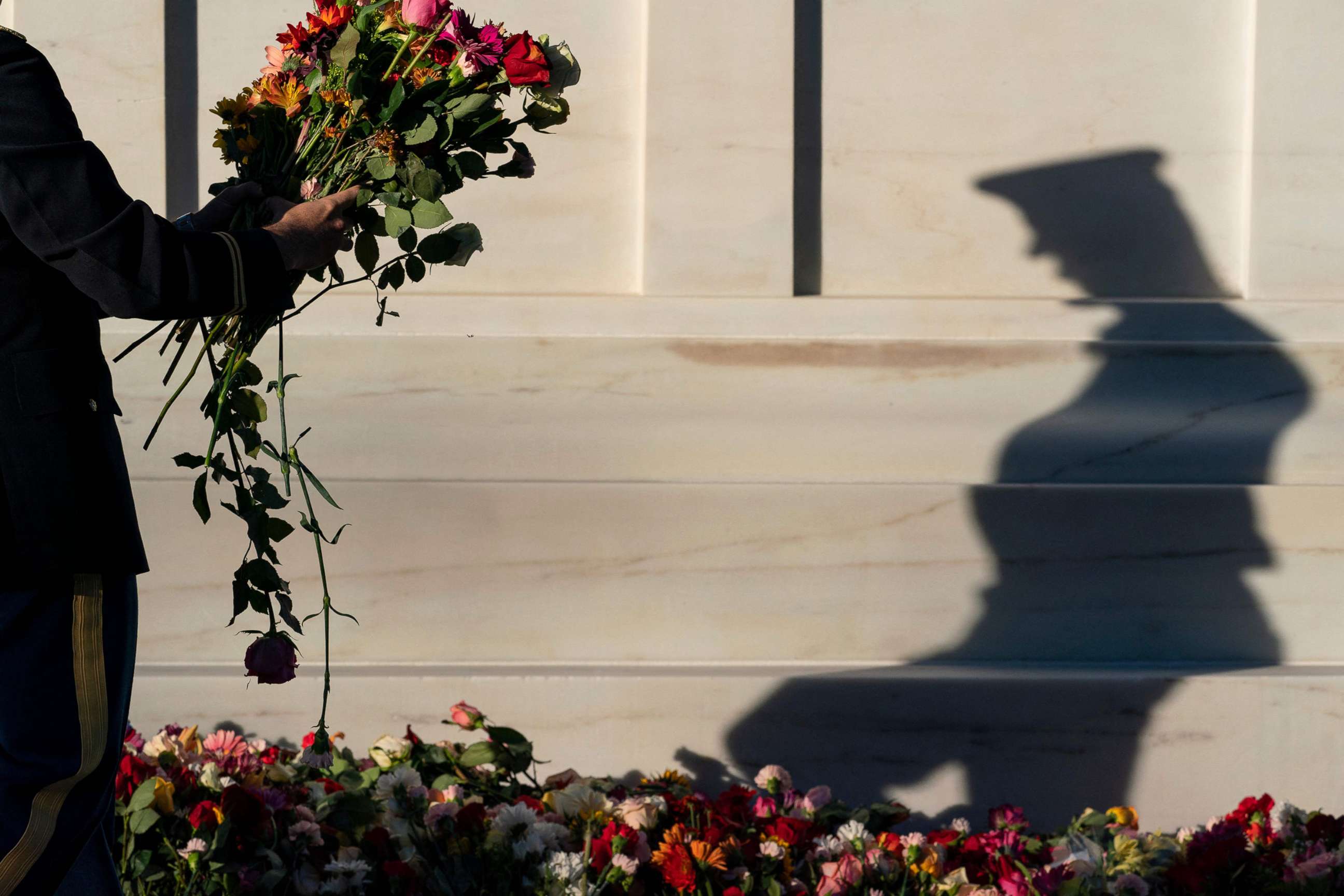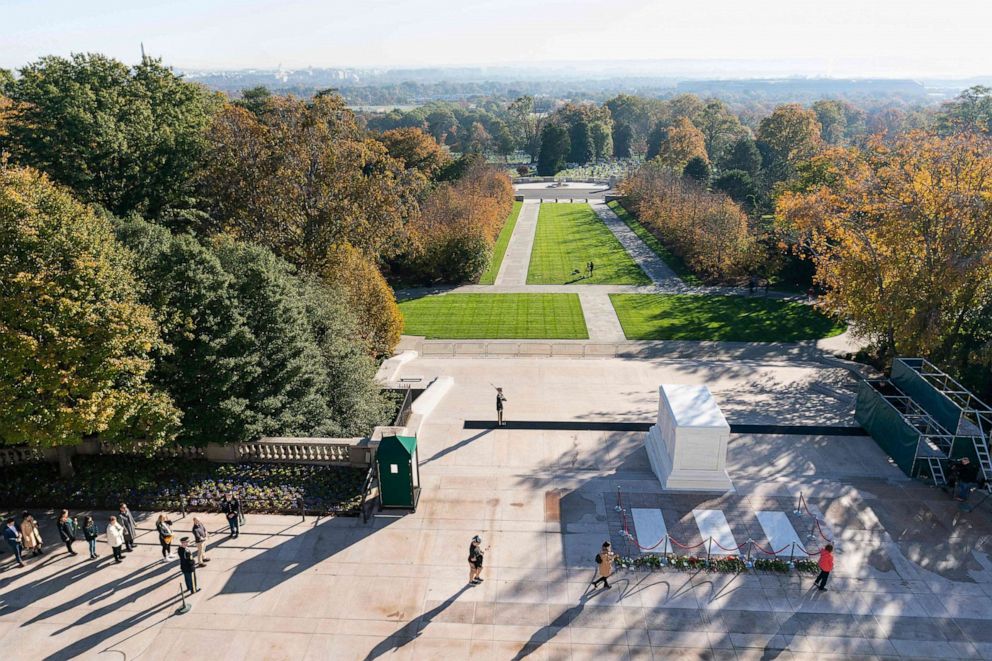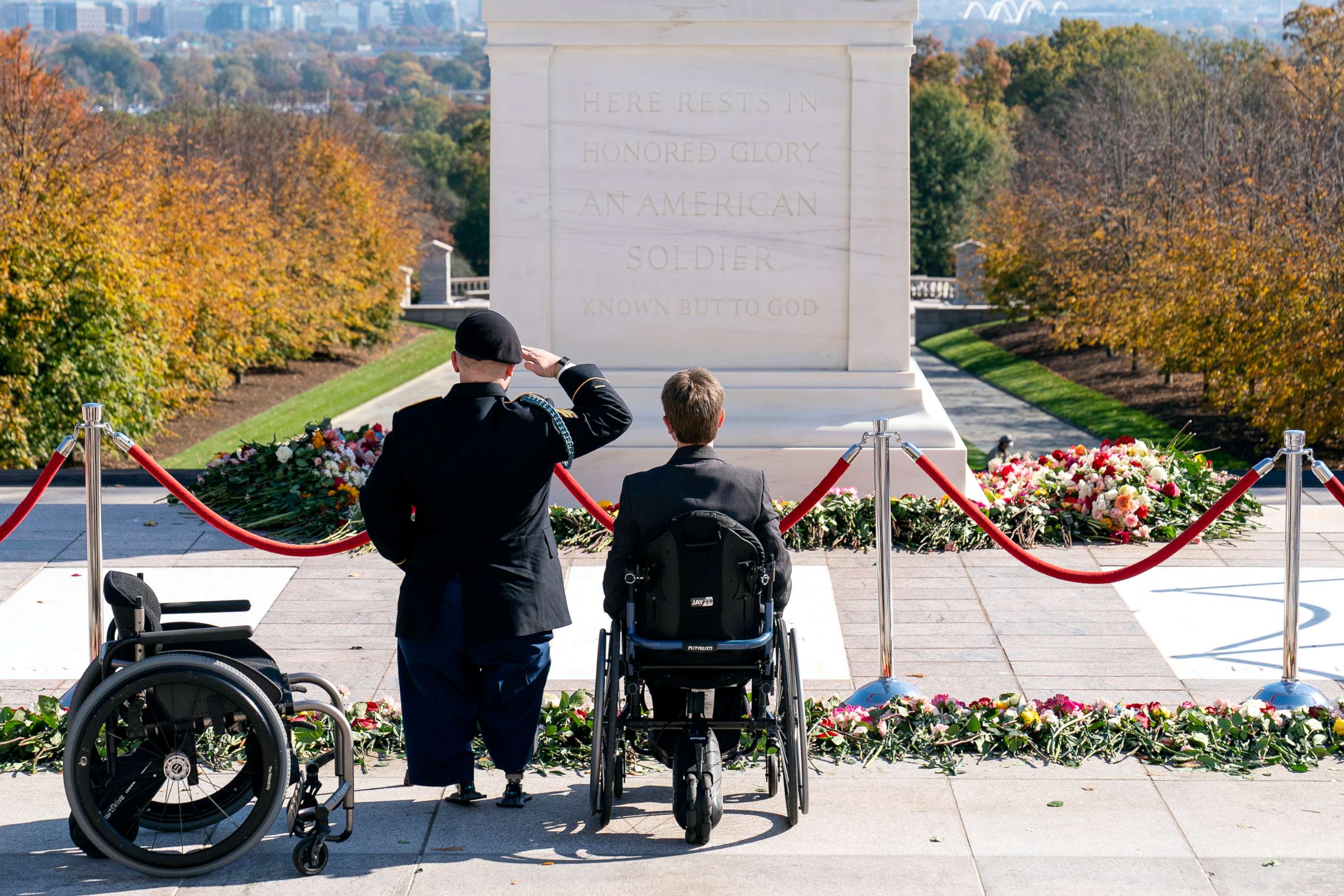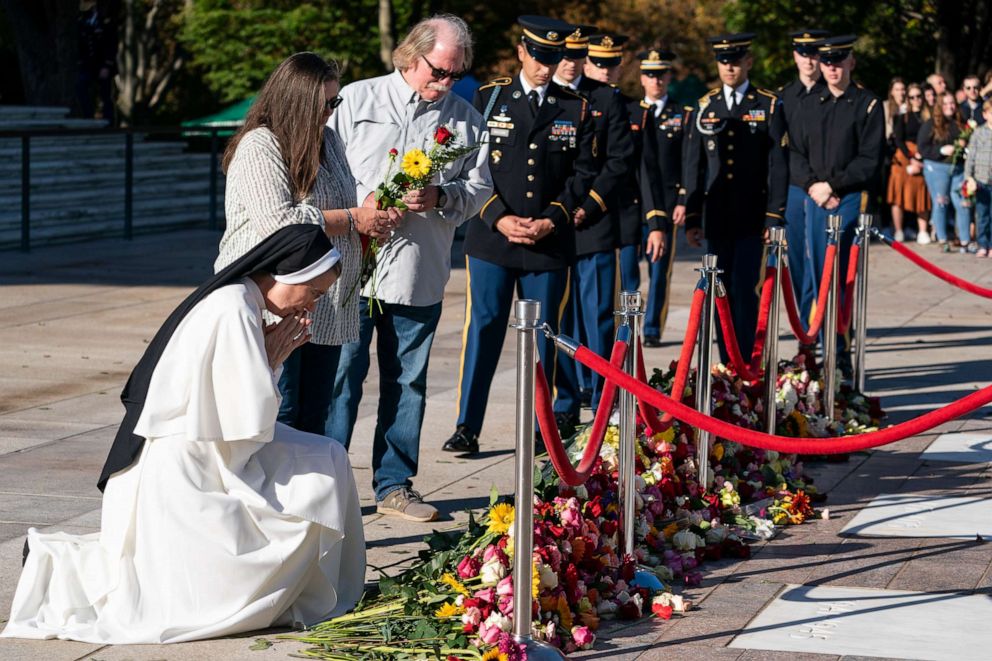Tomb of the Unknown Soldier marks 100 years honoring the nation's war dead
Visitors were given a rare chance to place flowers at the tomb.
For Bryan Bowman and Bob Mohr, there was no question about making the nearly 400-mile trip from Canal Fulton, Ohio, to Virginia and Arlington National Cemetery for the chance to lay flowers at the Tomb of the Unknown Soldier.
To mark the tomb's centennial, members of the public were given a rare chance to come close and lay flowers -- for the first time since 1948.
"It was just surreal, very surreal," Mohr said. "Who knows if we’ll ever get to do it again, in our lifetime."
"It’s a reminder of service echoing back to 1921," Bowman said.

One hundred years ago this week, the Tomb of the Unknown Soldier was dedicated to commemorate the final resting place of an unknown soldier from World War I, interred on Armistice Day, Nov. 11, 1921.
Since then, the tomb has served as a site of mourning and reflection in honor of unknown service members who died in all of America's wars.
Bowman and Mohr, a Marine Corps veteran, were among the first members of the public to pay their respects on Tuesday, the first of two days visitors were being permitted to come near the tomb.

The line, hundreds long, included Americans from all ages and backgrounds: elderly veterans in faded uniforms, young children in the arms of their parents, military spouses and loved ones, melded together.
Each paused a moment to gently place a flower atop of a growing pile a few yards from the tomb. Some held hands over their hearts, while others raised them in salute.
Many eyes welled with tears.

Piles of roses, daisies, carnations and sunflowers with long, green stems lay under a red velvet rope, the colorful flowers in poignant contrast with the white marble sarcophagus, inscribed with the words, "Here rests in honored glory an American soldier known but to God."
On the opposite side, a member of the U.S. Army's "Old Guard" marched in silence exactly 21 steps back and forth across the length of a black mat, pausing at each end for 21 seconds, echoing the honor of the 21-gun salute.
Tomb guards, also called Sentinels, maintain their post 24 hours per day, seven days per week, throughout the year. A guard-changing ceremony takes place on the hour every hour during the winter and every half-hour during the summer.

"All gave some, some gave all," said Amber Vincent, a cemetery public affairs specialist. "And some of them lost their identity in the process of serving our nation … That’s really what this ceremony and this centennial commemoration is about. Honoring those not only who have served that we know, but also those that we will never know."
In the distance, the sound of three-volley 21-gun salutes at military funerals rang out over the hushed crowd.
Up to 30 funerals a day were taking place, Monday through Friday, elsewhere in the cemetery during the centennial.
Some 400,000 service members are buried there.
Wednesday, Nov. 10, marked the day before Bob Mohr would end a 22-day journey to run 22 miles per day, for veteran suicide awareness.
"So, I’m here today for this ceremony and then I’m gonna run my 22 miles through the streets of D.C. for my twenty-first day," he said.
Editor's note: This story has been updated to reflect this is the first time since 1948 visitors have been allowed to place flowers at the tomb.




